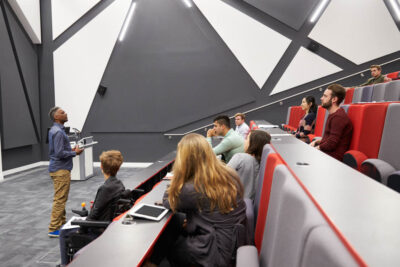- All Blog Categories
- Adult Education Blog
- Advancement Blog
- Community College Blog
- Data & Analytics Blog
- Enrollment Blog
- Higher Education Strategy Blog
- K-12 District Leadership Blog
- Student Success Blog
Our Blogs
Get the latest insights from EAB experts on a variety of topics and terrains from enrollment to student success to K-12 education to higher education strategy and beyond.

The real demographic crisis isn't national—it's regional

What are students asking university chatbots?

What higher ed can learn from these successful academic program revitalizations

Preparing for the end of Grad PLUS: 4 strategies to rethink graduate cost and aid
EAB Blogs by the Numbers
100+
Blogs authored last year8
Different blogs that span topics in education53
Contributing expertsRecent and Featured Posts from Every Blog
-
Advancement Blog
3 strategies to modernize your advancement approach in 2026
How advancement leaders can reach new donors, extend team capacity with AI, and drive engagement through digital marketing and video in 2026.
Blog -
Advancement Blog
How affluent women are redefining philanthropy
Women are reshaping philanthropy—favoring local impact, authenticity, and trust. Learn what this shift means for advancement leaders today.
Blog -
Higher Education Strategy Blog
What our global partners asked us most in 2025
Explore the top five questions higher education leaders around the world asked us most often in 2025.
Blog -
Enrollment Blog
What enrollment leaders can learn from Alabama’s statewide direct admissions program
Find out how Alabama’s Direct Admissions Initiative, powered by EAB’s Match, delivered $5.1B in scholarships and reshaped statewide college access.
Blog -
Adult Education Blog
4 questions domestic students will ask before applying to your graduate program
Discover the four key questions domestic students ask themselves before they consider applying to your graduate, online, or other adult-serving programs, based on a survey of over 8,000 graduate and adult learners.
Blog -
Enrollment Blog
Is your yield rate okay?
Insights from a new analysis of admissions yield data for enrollment leaders.
Blog -
Higher Education Strategy Blog
EAB Wrapped 2025: A year of reckoning—and reinvention—in higher ed
Before we head into 2026, we're looking back at the top blogs, guides, infographics, webinars, and other insights that resonated most with readers.
Blog -
Enrollment Blog
AI visibility is critical when competing for student enrollments
Boost your .edu’s AI visibility with strategies to strengthen E-E-A-T, improve search performance, and protect your brand in AI-driven search.
Blog -
Adult Education Blog
When Grad PLUS disappears: What 8,000+ grad students said about paying for school
Graduate PLUS is gone, cost is rising, and students are more aid-dependent than ever. Learn how schools can adapt pricing and aid to protect enrollment.
Blog
Great to see you today! What can I do for you?